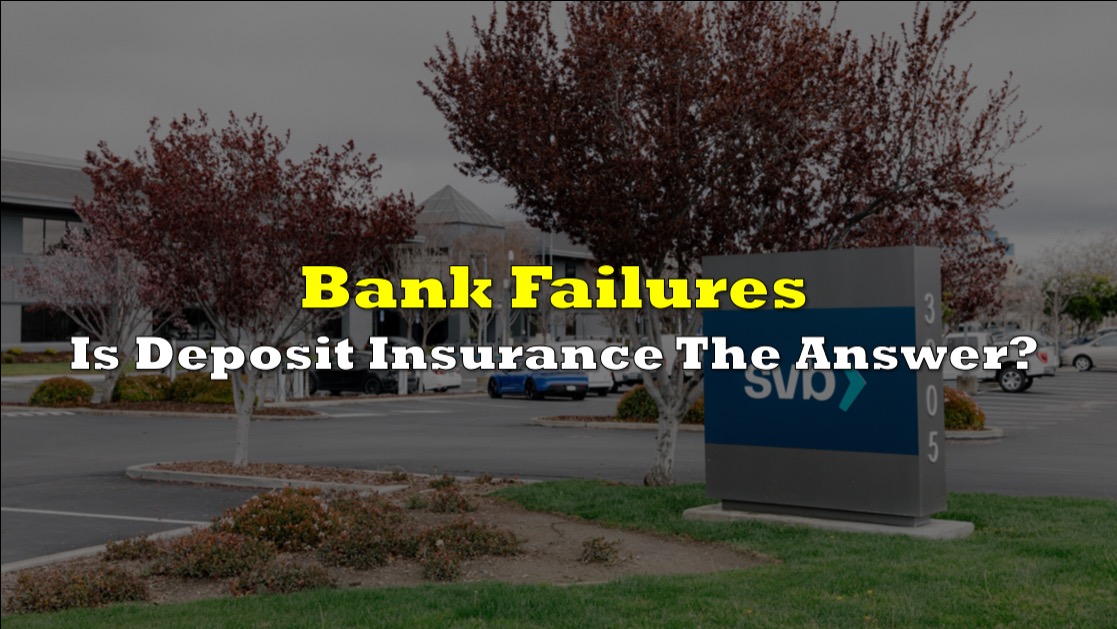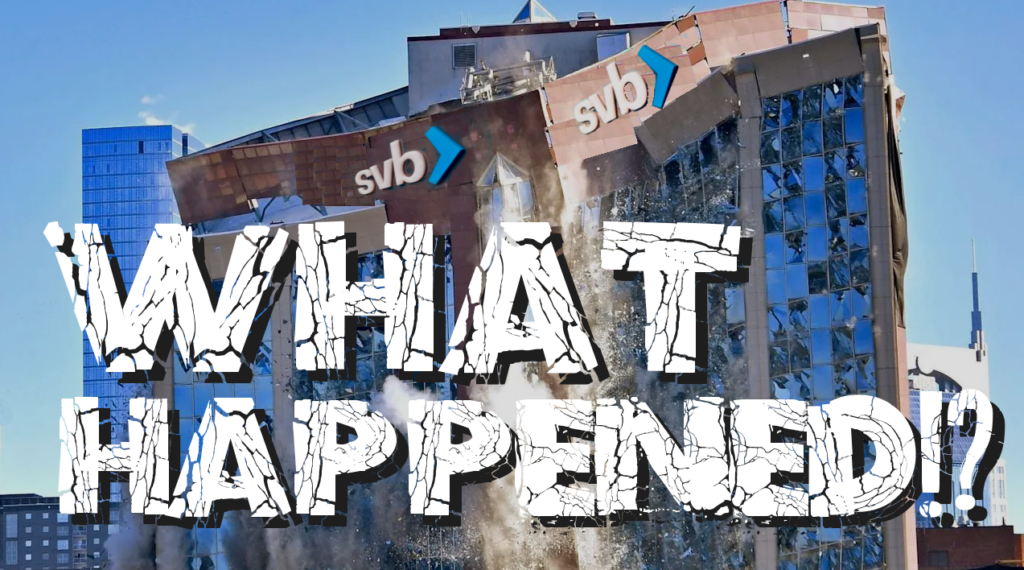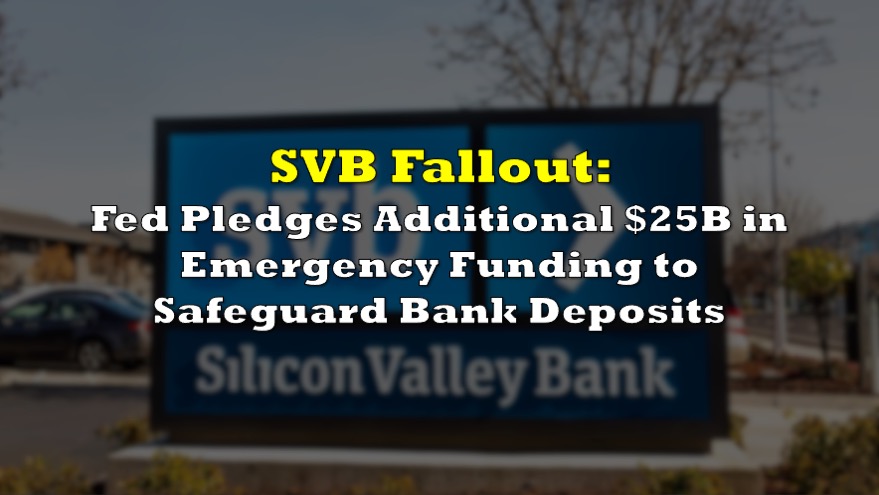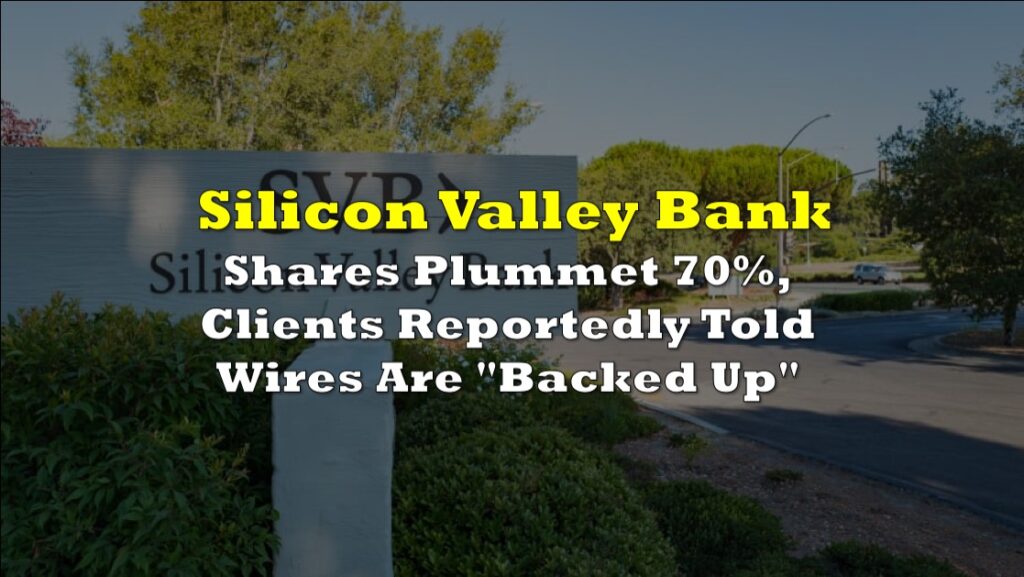In the months leading up to Silicon Valley Bank’s (NASDAQ: SIVB) demise, the bank’s lobbying groups went against a plan requiring financial institutions to boost their contributions to the Deposit Insurance Fund (DIF), which protects depositors in the event of a bank failure.
But after a series of bank collapses, deposit insurance is now in focus as the regulators figure out a way to make the banks’ clients whole without having to spend American taxpayer money.
California Rep. Maxine Waters, the top Democrat on the House Financial Services Committee, is proposing to guarantee all uninsured depositors in the future.
“Are we going to make sure that we take care of the uninsured in the way that we did with this fallout from Silicon Valley Bank?” Waters said in an interview. “I don’t know, but I will have to put it on the table.”
Waters would not commit yet to supporting legislation for the concept, but she did say she is considering several legislative solutions to what she called regulatory shortcomings that caused Silicon Valley Bank to mismanage its liquidity risk. Waters, like other Democrats, wants to reconsider the 2018 repeal of some regulations for mid-sized banks, which would have encompassed companies like Silicon Valley Bank, based in her home state, and Signature Bank.
The assets of the California-based bank were seized by US regulators on Friday after depositors began withdrawing dollars in droves amid concerns about the lender’s financial health. Regulators are reportedly planning to take another crack at auctioning the failed bank after the first one failed earlier this weekend.
Why did it collapse?
The bank’s business was largely centered on US technology startups. During the COVID-19 epidemic, the banks saw an increase in deposits as tech firms benefitted from offering entertainment and delivery services to those who were confined to their homes.
Silicon Valley Bank put a large portion of this money into US government bonds, which are traditionally one of the safest sorts of investments.
The bank’s problems began last year, when the US Federal Reserve began hiking interest rates in response to rising inflation, leading the value of those bonds to decline.
As the tech sector’s economic prospects deteriorated following the epidemic boom, many of SVB’s customers began to tap on their cash to stay afloat. SVB was obliged to sell its bonds at a large loss due to a lack of cash, raising concerns about its financial health.
After 48 hours, terrified depositors had withdrew enough money to bring the bank down.
While the debate goes on as to the cause of the collapse and if it is attributable to an event that would merit insurance claims, there is an apparent stress in the DIF to cover all of the collapsed banks’ clients.
Federal authorities announced an extraordinary move on Sunday that “fully protects all depositors” at the bank, promising that “any losses to the Deposit Insurance Fund to support uninsured depositors will be recovered by a special assessment on banks.”
The DIF ran empty during the 2008 financial crisis, with a negative $21 billion balance. As part of the ensuing Dodd-Frank reforms, lawmakers raised the amount banks were required to pay into the Deposit Insurance Fund, known as the “deposit insurance reserve ratio” – the ratio of DIF reserves to total insured deposits — from 1.15 percent to 1.35 percent.
This ratio is maintained by the Federal Deposit Insurance Corporation (FDIC) through altering insurance assessment rates. The agency stated in July that it would raise the premium by two basis points.
The bank lobbying groups banded together to oppose the FDIC’s request to boost banks’ insurance premiums in order to shore up the deposit fund’s reserves, which had fallen below the legal minimum.
Lobbying groups for Silicon Valley Bank contended that the danger of bank failure is low and that forcing banks to contribute more to the fund would affect financial institutions’ bottom lines.
The Deposit Insurance Fund (DIF) had less than $126 billion at the time to protect America’s almost $10 trillion in insured deposits, implying that the reserve ratio was less than the statutory 1.35 percent minimum.
At the end of 2022, the DIF had a balance of $128 billion, a pittance compared to the $9.9 trillion in insured bank deposits in the United States. Also in the same period, more than 90 percent of Silicon Valley Bank’s $175 billion in deposits were uninsured by the federal agency.
Flip-flop
The situation is compounded by calls to temporarily insure every bank deposit in the country, even those that are uninsured.
Beyond Waters, Missouri Rep. Blaine Luetkemeyer, a former banker and top member of the House Financial Services Committee, said in an interview that such a step would help the smallest banks deal with the consequences from the failures of regional lenders Silicon Valley Bank and Signature Bank.
To reduce economic damage, the Biden administration and regulators have already guaranteed all deposits at the two banks beyond the $250,000 deposit insurance level.
“If you don’t do this, there’s going to be a run on your smaller banks,” he said. “Everyone’s going to take their money out and run to the JPMorgan’s and these too-big-to-fail banks, and they’re going to get bigger and everybody else is going to get smaller and weaker, and it’s going really be bad for our system.”
The irony: Luetkemeyer is one of the lawmakers who pushed back against the FDIC’s proposal to increase assessment rates.
“We are concerned that an increase in the assessment rate at this time could pose real harm to consumers, particularly those with low and moderate incomes who may need access to credit,” said a comment on the proposed rule by House representatives at the time, including Luetkemeyer.
Just five months ago this same lawmaker, Rep. Blaine Luetkemeyer, sent a letter to federal regulators arguing against increasing bank payments to fund the Deposit Insurance Fundhttps://t.co/so25v2tNpp https://t.co/pe38CubStd
— Julia Rock (@jul1arock) March 14, 2023
Stifel also said that it seems unlikely for the Congress to approve “deposit insurance coverage for all bank and credit union deposits.”
"Currently, the odds seem low that Congress will approve deposit insurance coverage for all bank and credit union deposits. A smaller increase (perhaps up to $500,000) or indexing deposit insurance to inflation seems to have a better chance of passing Congress." – Stifel
— zerohedge (@zerohedge) March 15, 2023
Luetkemeyer cited a temporary regulation put in place following the 2008 meltdown that provided unrestricted deposit insurance over the $250,000 limit.
“So what you could do right now is that very same thing and say, hey, look, for another 12 months here or six months, we’re going to guarantee you every single deposit in this country and every bank until we get this interest rate situation resolved and these banks get back on solid footing,” he explained.
He later altered his mind about the period, with a spokeswoman indicating the guarantee may last “perhaps 30 to 60 days.”
Information for this briefing was found via American Banker, The Lever, Politico, Al Jazeera. and the sources mentioned. The author has no securities or affiliations related to this organization. Not a recommendation to buy or sell. Always do additional research and consult a professional before purchasing a security. The author holds no licenses.








